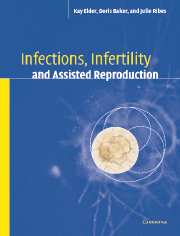2 - Bacteriology
from Part I - Overview of microbiology
Published online by Cambridge University Press: 29 October 2009
Summary
Bacteria are unicellular organisms that belong to the kingdom of Prokaryotae. Whereas eukaryotes have membrane-bound cytoplasmic organelles designed to carry out specific functions, bacteria have no welldefined nucleus, nuclear membrane or membranebound organelles. Their bacterial genome consists of a single, double-stranded, closed circular DNA molecule that lies within the cytoplasm, along with mesosomes, ribosomes, and various cytoplasmic granules, all of which are enclosed within a thin elastic trilaminar membrane. The majority of bacteria also lack the cytoskeleton that gives support and structure to eukaryotes. With the exception of the mycoplasmas, bacteria contain a cell wall of unique chemical composition. They are microscopic in size, with species ranging from 0.25 μm to 1 μm in width and 1 μm to 10 μm in length. Some bacterial species have capsules, flagella, or pili, and some species produce endospores.
Bacteria are divided into Orders, Families, Genera, and species, and named according to genus and species: e.g. Escherichia (genus) coli (species). Bacteria within the same genus and species also may be designated as subspecies, based upon differences in geographic distribution, transmission, clinical manifestation, and pathogenicity, e.g. Treponema pallidum subsp. pallidum, and T. pallidum subsp. pertenue. They may also be classified in serogroups, serotypes, or serovars based upon surface or subsurface antigens or according to the type of capsule surrounding the bacterium. For example, streptococci are grouped on the basis of specific cell wall polysaccharide antigens (Lancefield groups).
- Type
- Chapter
- Information
- Infections, Infertility, and Assisted Reproduction , pp. 21 - 89Publisher: Cambridge University PressPrint publication year: 2004



